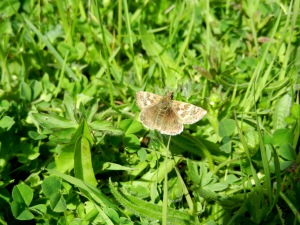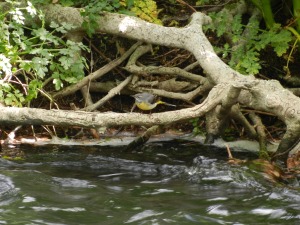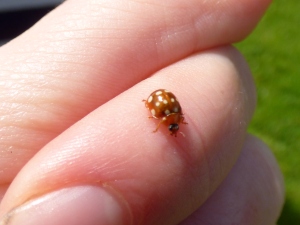Signals and mi-newt details
I know that every blog post, I say how amazing the last week has been and how I’ve seen so many cool species. This week is no exception and what a week it has been! There has been so much awesome stuff happen that this blog post would be ridiculously long if I were to mention everything, or even half of it! So it shall be a very slimmed down affair.
It started off with a visit to one of my favourite Dorset places – Brownsea island! It was just a super quick visit, but I saw a bird that I love which is the Black-Headed Gull, as it was among the first birds I learnt to identify at Chesil and I think that it is generally quite cute.
Crayfish training was rather surprising as there are more non-native species in the UK than I thought! However, the big baddy is the Signal Crayfish from America which is a really awful invasive species and our native White-clawed Crayfish is really suffering as a result.
It’s a combination of the American species acting as carriers for a disease that is fatal for our species, it is also bigger and breeds earlier, thus pushing out the native species. In addition, it’s practically impossible to remove the American species once it establishes itself in a river. Lastly, it is possible to spread the disease through human transmission – wellies and, I should think, leisure craft (e.g. kayaks).
From crayfish to amphibians, and even more awesomeness. After a theory session on ID on the different native and non-native species, we headed out to Powerstock Common Reserve and had a look for the species. We were particularly interested in Great Crested Newts (GCNs) as they’re a protected species and are also quite groovy animals. They’re relatively large, the largest of our newt species and the adults at unmistakable. The juveniles can have a bit of confusion with other species. SUPER COOL FACT: juvenile newts are called efts!

An eft! Not a great photo, but can you make out the gills at the back of the head?
Unknown whether smooth or palmate newt species.
ID features for GCNs include: size (up t0 16cm!), colouring (black on back, orange on belly), pattern on throat (spotted), feet (stripy!) and the male has a large crest with a distinct dip (this may only be during the breeding season though).
I enjoyed the amphibians training day so much that I’m considering doing a species/group profile post on newts! For now, Amphibian and Reptile Conservation have got a new ID guide in PDF format which can be downloaded for free.

Great Crested Newt male (note the large crest on his back). He is next to another newt species (much smaller!)
The last training of the week with Dorset Wildlife Trust was on Odonata – i.e. dragonflies and damselflies, of which there are far more species than of the amphibians! Again, a theory session in the morning was followed by a practical afternoon with a visit to Winfrith Nature Reserve. We were netting damselflies for ID, but you shouldn’t net dragonflies, so we were relying on them to rest for a little while in order to look at their ID features (body shape, colour, wing spots and patterning are the main ones).
I do believe one of the favourites of the day was the Scarce Blue-tailed Damselfly, whose specific ID features are the last segments on the abdomen (though we would call it the tail). Segment 8 is half blue and half black, whilst segment 9 is blue with a distinctive black line one it (of 10 segments along the abdomen [tail]). You should be able to see it relatively easily in the photo (I would suggest opening up the photo separately in order to zoom).
In addition to the lovely creatures that were the focus of the training days, there were so many other amazing species seen from a variety of groups including (but not limited to): Hobby, Grey Wagtail and Lapwing (birds), Green-veined White and Dingy Skipper (butterflies), Cream-spot (ladybird), Bugle, Green-winged Orchid and Yellow Archangel (flowers). I shall finish off this post with nice photos of some of the mentioned species.
Dingy Skipper Butterfly. Although less bright and flashy than other butterflies, it is still a beauty.




![Scarce Blue-tailed Damselfly (note the end segments of the abdomen [tail])](http://mshersby.files.wordpress.com/2014/05/p1030105.jpg?w=300)


